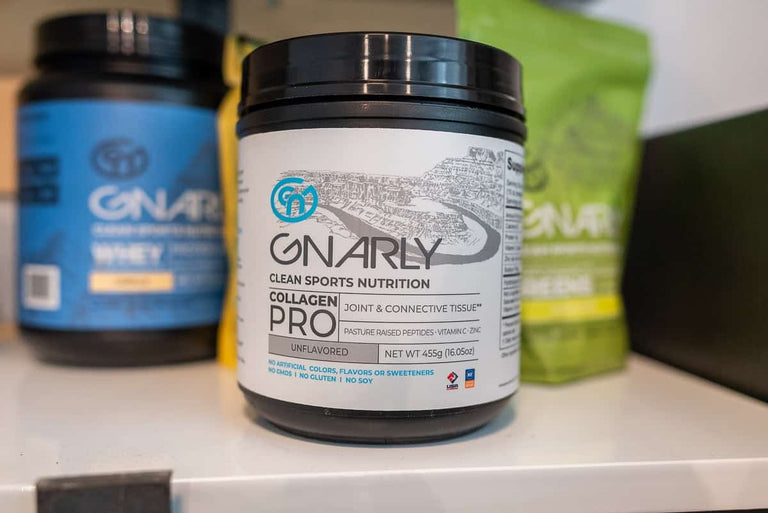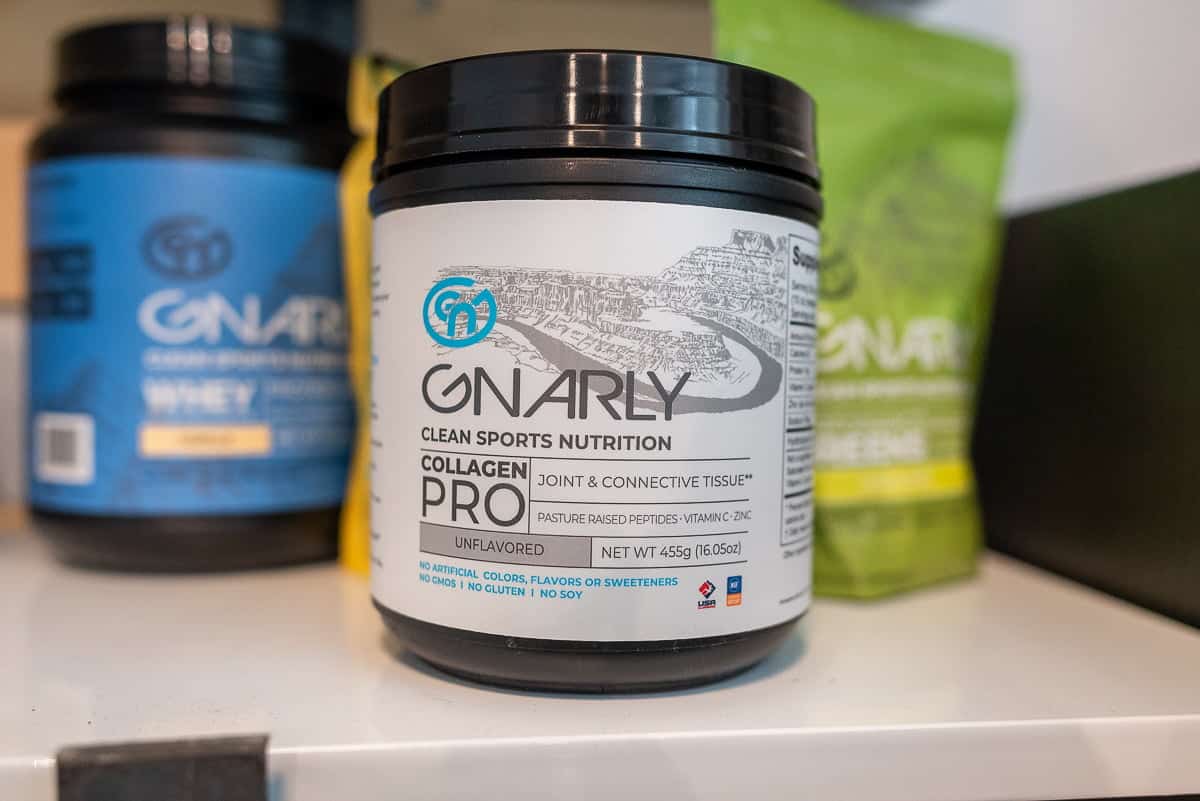Google “collagen supplements” and you’ll be bombarded by not only a wide variety of sourcing choices (bovine hide, eggshell membrane, chicken bone broth), but also an array of collagen types associated with one or all of these sources (Type I, Type II, Type III, multi-type collagen). Additionally, different collagen types are associated with different and specific claims about their benefits for the body: Type I and III for gut, hair, skin and joints; Type II for joints and osteoarthritis; Type V for eye health and neonatal development…. It can all be extremely confusing and hard to navigate.
To help, this article will give you the basics on collagen as a protein and will break down collagen types. After reading, you’ll be able to decipher whether or not they’re relevant to your collagen supplementation, or just good old-fashioned marketing hype.

What is collagen, anyway?
Collagen is the body’s most abundant structural protein and it’s the main component of various connective tissues in the body. There are 28 types of collagen and these collagen types vary in amount in each of the body’s tissues (1), with 80 to 90 percent of the collagen in the body consisting of Types I, II, and III. Collagen Type I is the most abundant form of collagen and is distributed in bones, ligaments, tendons and skin. Type II collagen is primarily distributed in cartilage, but found in smaller amounts in tendons and ligaments. Type III collagen, which is always found with Type I, is most prevalent in skin, blood vessels, and internal organs (3).
Okay – so we’re about to get fairly science-y, but stay with me as the science is an important basis for understanding collagen type and whether the current research supports ‘type specific’ benefits and health claims.
The nitty gritty
Collagen protein contains 19 amino acids and is particularly rich in glycine, proline and hydroxyproline. It’s important to note that despite being high in these three amino acids, collagen is relatively low in both essential amino acids and branched chain amino acids. For these reasons, collagen has long been considered an ‘inferior’ protein (3).
All collagen types consist of three polypeptide or amino acid chains that give it a characteristic triple helix structure. These polypeptides are composed of at least one repeating triplet of amino acids, Glycine-X-Y, where the X and Y positions are often the amino acids proline and hydroxyproline (1). Collagen types are distinguished by the number of these Glycine-X-Y triplets they have, the amino acids that occupy the X and Y positions, and the resulting final shape of the specific type of collagen protein.

Collagen cannot be absorbed as a whole protein and must be broken down into smaller pieces before it can be absorbed by the body. For this reason, most collagen supplements contain collagen protein that has been hydrolyzed, meaning that the protein has been cut into smaller groups of just 2 to 3 amino acids, or peptides. These peptides are then easily absorbed by the digestive tract and some are eventually broken down into single amino acids. This means that no matter what type of collagen protein you are taking, that collagen has been broken down into peptides or small groups of amino acids.
Because the amino acid sequence of collagen is quite similar between the different types of collagen, it may not matter if they come from Type I, Type II or Type III sources. There is some evidence that the peptides (or amino acid groupings) in these types differ slightly, but the significance of this has not been determined. This is an important point, because current research suggests it is the amino acids that ultimately have an impact on collagen synthesis (3) and this appears to be independent of collagen type.
So what does all this science-y talk mean for my supplementation?
In a podcast with the Institute of Performance Nutrition, Dr. Keith Baar, a leading researcher in the study of collagen supplementation, says: “People promote these (types) as betting better, this is good for your cartilage versus good for your tendon or skin… In every study that we’ve done, we’ve looked at it with six or seven types of collagens and gelatins. They all seem to behave the same. There doesn’t seem to be a magic peptide and there doesn’t seem to be a magic component.”
To show something like this, a type-specific benefit, we’d really need studies comparing the impact of different types of collagen on the same health condition. For instance, in the case of Type II collagen and alleviation of joint pain, we’d need to see studies comparing Type II collagen to another Type of collagen on joint pain. Two studies have done this (4, 5), one showing a positive impact of both Type I and II collagen on joint pain in osteoarthritis (4) and the second showing no impact of a variety of collagen types on the synthesis of articular cartilage in the knee (5). The majority of research published to date compares supplementation of a single type of collagen to a placebo (taking nothing) and thus supports the benefits of collagen, but not one specific type over another.
So while Type II collagen may be beneficial for joint pain, Type I and Type III collagen may be similarly beneficial. In an interview with Today’s Dietitian (3), John Ivy, PhD, from the University of Texas at Austin, further supports this point: “‘Some are thought to be better for one thing or another,” However, “the research on that isn’t as clear—whether one collagen is better than another as far as supplementation goes.”
Alright, alright. What’s the take home message? Research supports that collagen supplementation may be helpful for joint resilience, injury recovery and even skin elasticity. But what the research doesn’t currently support is that you have to buy any one particular type or source of collagen to realize these benefits. That my friends, appears to be marketing hype.
And be sure to pick up a tub of our brand new offering: Gnarly Collagen Pro!
References
- Belbachir, K., Noreen, R., Gouspillou, G., & Petibois, C. (2009). Collagen types analysis and differentiation by FTIR spectroscopy. Analytical and bioanalytical chemistry, 395(3), 829-837.
- Lodish H, Berk A, Zipursky SL, et al. Molecular Cell Biology. 4th edition. New York: W. H. Freeman; 2000. Section 22.3, Collagen: The Fibrous Proteins of the Matrix.
- Baar, Keith. “Minimizing injury and maximizing return to play: Lessons from engineered ligaments.” Sports Medicine 47.1 (2017): 5-11.
- Kumar, Suresh, et al. “A double‐blind, placebo‐controlled, randomised, clinical study on the effectiveness of collagen peptide on osteoarthritis.” Journal of the Science of Food and Agriculture 95.4 (2015): 702-707.
- Schadow, Saskia, et al. “Collagen metabolism of human osteoarthritic articular cartilage as modulated by bovine collagen hydrolysates.” PLoS One 8.1 (2013): e53955.
- Santa Cruz, J. (2019) Dietary Collagen — Should Consumers Believe the Hype? Today’s Dietitian Vol. 21, No. 3, P. 26





